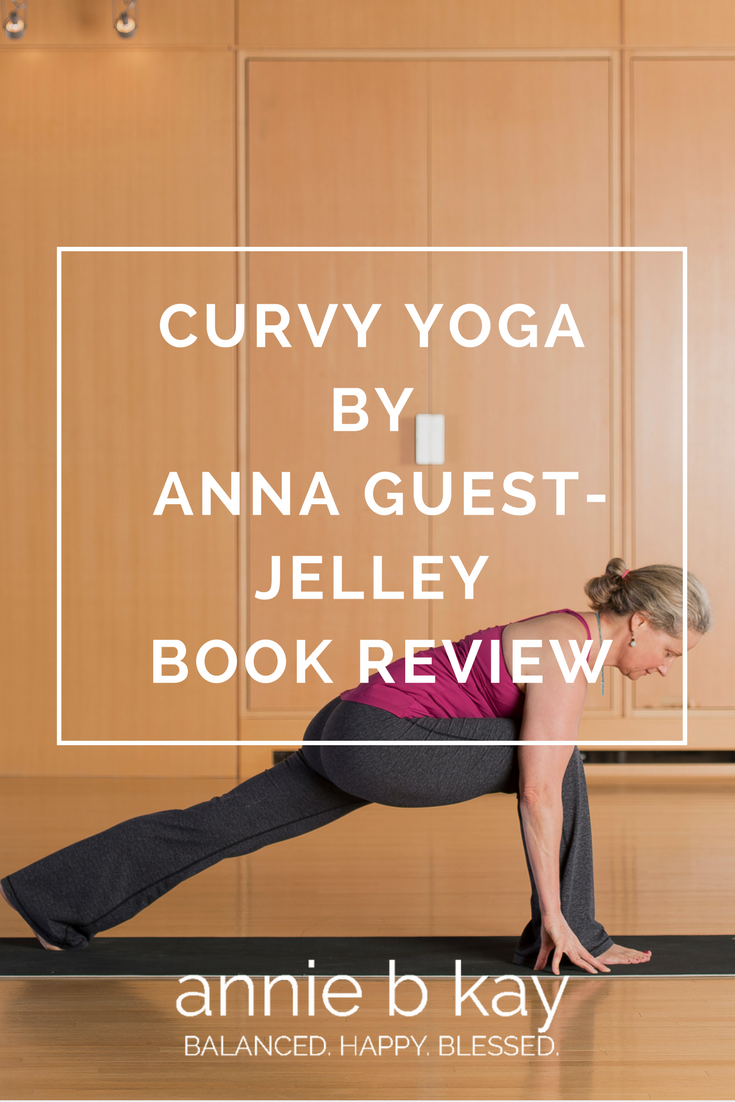
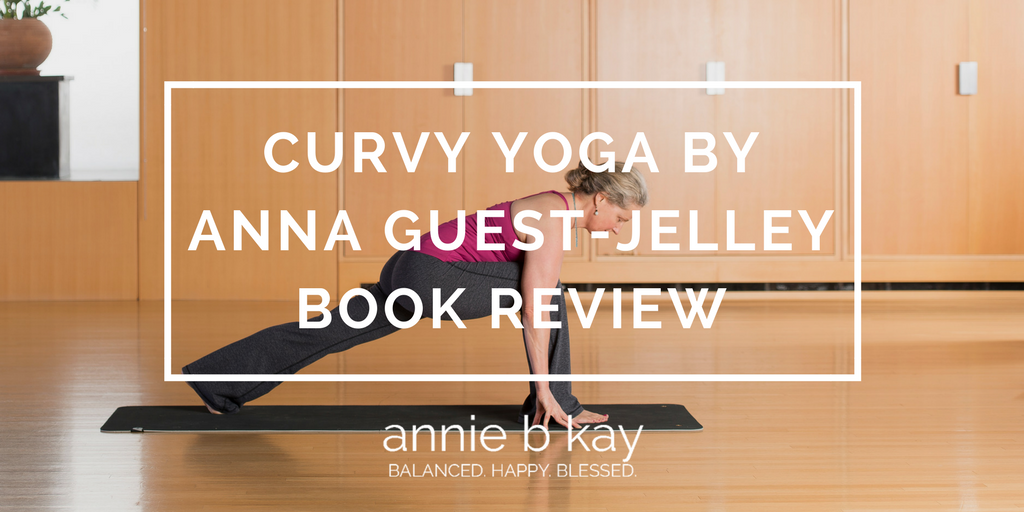
Since I’ve been blogging regularly, I’ve somewhere, somehow gotten on the radar of a number of book publicists. As a lover of books and authors, I’ve been overjoyed, and have a stack of the latest greatest by my bed. Sadly, there are not so many that I can recommend to you, my beloved tribe. Yet I read on, and there are definitely gems coming out every day.
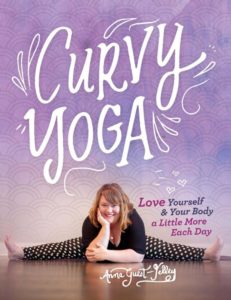 Here’s one! Curvy Yoga. Love. It is beautifully produced, good to hold, well-written, contains needed messages, and features a great author.
Here’s one! Curvy Yoga. Love. It is beautifully produced, good to hold, well-written, contains needed messages, and features a great author.
As a nutrition clinician for decades, I’m seeing body hatred on the rise. It seemed that there were a few years when women (and men!) were feeling better about their bodies just as they are, but the last few years have felt like a bit of a backlash of the media-perfect. Too, I’ve crossed the 50-year-old mark and going through menopause was a powerful experience, not only within my own body, but sensing (while I feel fantastic and at the top of my game) that I was plopped into some less valuable category by…many. So I am sensitive, yet not too, methinks.
It takes no small amount of courage to show up as you are these days, but Curvy Yoga is a manual to do just that. If you find yoga too….whatever, here’s a read for you. In fact, if you’ve been injured in a yoga class, or can’t find a yoga class, please take a read before giving up on yoga. If you wonder if you belong in the spandex-wrapped perfect-yoga-body competitive yoga world (you don’t!…neither do I….or most people for that matter) here’s a book for you. And if you, like me, used to be a flexible yogi, and find yourself less so, but still interested in having yoga in your life, check it out.
Curvy Yoga focuses mostly on the integrative how of practice, focusing on accessibility from a physical, mental and energetic perspective. You’ll get to know the author, with personal stories of how yoga has impacted various areas of her life. As an author of a book in a similar genre (Every Bite Is Divine – it’s the food companion to Curvy Yoga) I feel a definite kin-ship sisterhood with this author. This book, as I think of it, is a lovely companion to Yoga & Diabetes.
Ms. Guest-Jelley provides a collection of aids for doing various yoga postures with a round goddess body and using props including (my favorite) a wall to support your safe and effective practice.
If you haven’t purchased a yoga book in a while, and you’d like a lovely and accessible guide written by a fresh voice, here you go.
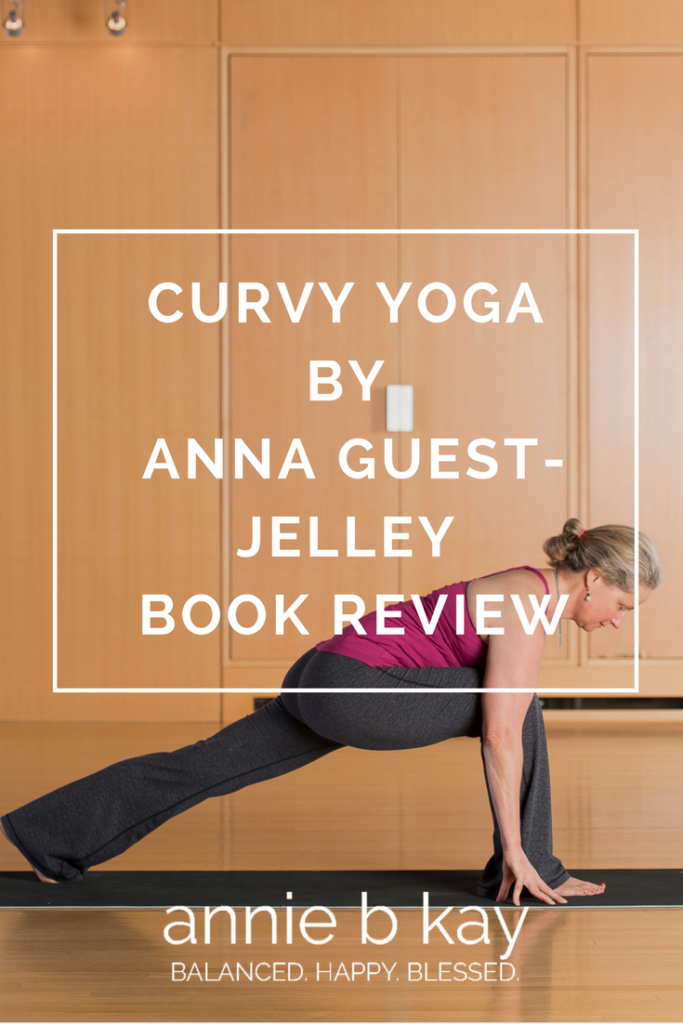
Pinterest


Are you a dietitian who teaches yoga and uses it in your professional nutrition practice? Well, Namaste dear ones – our numbers are growing!
FNCE 2016: Boston
I have been honored to share on this new (and several thousand years old) field of yoga in dietetics at FNCE twice thus far. My presentation colleagues are Dr. Sat Bir Khalsa from Harvard and Anu Kaur, an RDN/RYT dietitian with the NIH and in private practice. We are delighted that we’ll be presenting again in Boston in October. Our session (#203) is Sunday morning first thing – be there!
Please take 10-20 minutes to complete this survey exploring how nutrition professionals are using yoga in their practice: RDN/RYT FNCE Survey
Please complete the survey by August 1.
This year, as part of the presentation, I am hoping to collect some developmental data on just how many of us are out there, who we are and our range of training and practice experience. I’d also like to get a sense of what this group would like now for support to develop this field. I will be presenting the data from this survey, and will also feature as many of you as I can – your beautiful websites, active communities, training and books appreciated.
Thank you so very much for participating, and for your work in this area. Can’t wait to see how RDNs across the country are weaving their expertise with the wisdom tradition of yoga.
Annie

Pinterest
This year there are a smattering of studies suggesting that meditation, yoga and mindfulness practices improve gene expression. Gene expression relates not only to family traits like hair color, but to the smooth operation of every cell and tissue in your body for the rest of your life.
Gene expression and epigenetics
Epigenetics is the big news in genetics that no one seems to be talking about. Me and my colleagues at Kripalu, however, are very excited. The concept is that we each have an internal environment, and we have much more control over that internal “soup” in which our genes unfold that we’d thought, is good news for those of us in the yoga lifestyle world. Everything you do in life – the food you choose (and choose not to) eat, the way you work relationships, how you feel about yourself and everything around you – influences your internal environment. Epigenetics is the environment – the internal environment – you create through lifestyle.
There’s a shamanic teaching that you become the result of all the vibration you surround yourself with. So, love that car. Love that apartment, and really love all the foibles of your spouse. Life (and your health) will be better for it. This ancient teaching sounds modern and true in the age of epigenetics.
These are early, small studies but are fascinating enough to point the way for larger trials. There is geek drama here. In one study, in the journal Psychoneruoendocrinology, a group of 19 people with a regular ongoing meditation practice were tested before and after a day of intensive mindfulness meditation practice. A control group of 21 people who did not meditate were tested before and after a day of leisure activities. At the beginning of the study, people in each group had similar test results for genetic markers. After the intervention the meditation group had significantly improved levels of epigenetic regulatory enzymes, lower expression of pro-inflammatory and other chronic disease promoting genetic markers.
After one day.
The take home
Everything that you do matters. You create much of who you are by what you do and how you feel. Eating a whole-foods plant-based diet, learning how to deal with the ever-increasing levels of stress in our worlds, and doing what you can to enjoy your life matters. There are a growing number of quality resources to help you – find an author or teacher of yoga, meditation or mindfulness that resonates with you, and practice.
Here are just a few:
- Kripalu is filled with wonderful teachers, many of whom now have CD practices and books available in addition to offering workshops.
- I love Sally Kempton. She has been practicing and teaching for decades, and has a rare combination of wisdom, kindness and clarity. She’s in the zone.
- Then there’s me. My book, Every Bite is Divine uses yoga and mindfulness in combination with nutrition awareness to help find peace in the war on weight.
- Yoga and Diabetes: Your Guide to a Safe and Effective Practice, my second book, with co-author Lisa Nelson, MD comes out this summer. More on that later.
- I put time and energy into my almost-montly newsletter that aims to inspire and guide a mindful and botanical integrative whole-foods lifestyle. Yoga, Botanicals, Nutritional Science, Fun and Creativity. That’s me. Check out the newsletter here.
- You might also enjoy:
- Begin a yoga practice: tips for a happy introduction.

Part the fascination (and frustration) with food and nutrition is that it’s always changing. But if you look around, so is our world. This year I’ve been blessed to have the opportunity to dive deeper into two traditional models of health – Ayurveda at the incomparable Kripalu School of Ayurveda, and the shamanic work of plant spirit healing with the wonderful Pam Montgomery. As someone with a foot in both worlds (biochemical and spirit-integrative) it’s a fascinating time of convergence. I think the overarching theme of the year, nutritionally, is that our personal choices have global impact.
Here are my top five nutrition memes for the year that was (and is for a another day or 2):
1. Microbes rule: even more than we think.
We have more bacterial cells in our lower GI than all the other cells in our body combined. As it turns out, your ‘bugs’ are most of your immune system, are critical to the health and functioning of your digestive tract, and have a hand in the regulation of your whole body.
The Wall Street Journal’s health blog is atwitter with how our gut bacteria may influence our weight. This year I’ve seen stories on our microbiota’s influence on risk for cancer, our psychology and personality, and nearly every area of preventive health. I’m grateful to be working with digestive diva Kathie Swift MS RDN who has been talking about the bugs in our gut and their ramifications for health and how to balance them for some time now. She’ll be busy in 2014!
2. Is neuroscience nodding to shamanic and tantric wisdom? Yep.
Functional MRIs, until relatively recently, were only done in animals. But now we’re seeing scans of humans brains and the story that’s unfolding seems to come straight from shamanic or tantric philosophy. In shamanic tradition it’s thought that you become the vibrational result of everything – absolutely everything including your own mental internal dialouge, food, friends, work – you surround yourself with. The work of Mary Dallman and others has shown us how sugar and stress activate the amygdala (the emotion center of the brain), and how yoga and mindfulness rebalance by activating the pre-frontal cortex (the executive functional center).
But back to vibration. This year I’ve read the biophoton work of Fritz Popp (a German physicist), and heard about how his ideas may be part of the bridge between science and spirit. His theory is that all communication within cells comes down to biophotons – light vibration. He also talks about coherence – that when vibrating entities (and we are all that) resonate with each other, it amplifies their vibrational frequencies. His work offers a mechanism to explain how I can connect through my heart with a plant – as I learned to do this summer. This work dovetails nicely with The Heart Math work and Lynn Mc Taggert’s work on the human energy fiend and intention.
Fascinating exciting, and early stuff. For me right now it’s more about the direction of thought that the confirmable quality of the science. I do think confirmation, and high quality work is and will be done on these issues of physics and bioenergy and that’s an investigation I’m excited to follow in 2014.
3. It’s the food, the whole food: supplements don’t optimize and what’s good for the planet is good for you
Colin Campbell’s new book, Whole, is the just the latest offering to question the use of supplements. While high quality supplements used with skillful moderation can be powerful medicine to a person out of balance, for most, they’re useless at best. Overused, they are the ultimate processed food.
Use supplements under the guidance of a licensed nutritionist. Generally, they are best used for short-term treatment of a specific nutrient compromise or to treat a symptom. I’m a bigger fan of using herbs and spices for wellness.
Cambell’s book is also another argument to curtail the meaty version of the paleo diet. When I evaluate a diet, one measure I use is – what happens to the earth if everyone on it follows this diet? For plant-based diets, clearly the planet thrives. For meat-heavy, dairy-heavy and refined diets, it’s a planetary disaster.
Plant-based diets are in balance – personally, globally.
4. The end of trans fat? Yes!
The FDA has recently sounded the death knell for trans fats. Trans fats are those artery-clogging artificial fats used in refined foods – hydrogenated fats and the like. They are the result of trying to make cheap oils into something that acts more like butter and lard in baked goodies and other processed foods.
No timeline yet, though industry has known that it laid an egg (that contributed to a whole lot of suffering) with this one for some time. Center for Science in the Public Interest CSPI is pushing for a 6-month deadline, and their work will keep the FDA and the food industry on task.
Very very good news.
5. Metabolic individualization and intermittant fasting (what’s old is new again – again)
The functional nutrition movement has focused on the concept of biochemical individuation for a while now, and in my therapeutic nutrition work, clearly, this is the case – everyone is different on the physical – biochemical level. Then if you add in emotions, mental self-talk, energy – well, everyone is even more unique. This sounds hauntingly familiar to the dosas in Ayurveda. Are the doses genetics? Maybe – certainly they are a old thread that leads to what genetics tells us today.
Another ancient idea that happens to be a hot area of nutrition research is intermittent fasting. Mimi Spencer and Michael Mosley came out with a book- Fast Diet – this year based on this research that proposed a 5:2 plan – to eat as you normally would for 5 days, then take only 500 calories on 2 non-consecutive days. Here’s an article on the idea.
May your 2014 be filled with good food lovingly prepared and eaten with people you enjoy. I look forward to our year together!
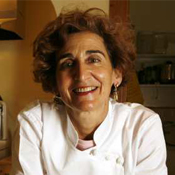
Martha Rose Shulman is in the zone. She’s been there for a long time. Author of my favorite Mediterranean cookbook, I love her entries on the NY Times Well blog.
Here’s her latest, You’re Going to Need a Bigger Bowl, on veggie rich one-bowlers.
I remember Martha Rose from a panel on cooking for the media eons ago at Simmons College when I was getting my Masters at BU (in Nutrition Communications). She was sassy and funny and stylish. Rock on, Martha Rose!
Did you know that there is a measure of the antioxidant activity of food? That’s the effect that all the phytochemicals – antioxidants and other micro-nutrients that we’ve learned so much about in just the last few years have in our bodies. The USDA has just expanded its database of foods and their ORAC (oxygen radical absorbancy capacity) scores. You can see the scores and learn more about what it means here.
What I love about this new information is that foods that I knew in my gut were healthy, but was told in my early nutrition classes were not rich in vitamins or minerals – things like beets and apples – are. The gut is right again – only now I know why. Foods with great ORAC scores are brightly colored fruits and veggies, herbs, and yes, chocolate.
Antioxidant activity in the body is thought to prevent nearly every chronic condition that so many Americans struggle with. So again, focusing on a plant based diet, along with the magic of movement, is what the medicine doctor ordered for 2008.
Be well.


 Here’s one! Curvy Yoga. Love. It is beautifully produced, good to hold, well-written, contains needed messages, and features a great author.
Here’s one! Curvy Yoga. Love. It is beautifully produced, good to hold, well-written, contains needed messages, and features a great author.







